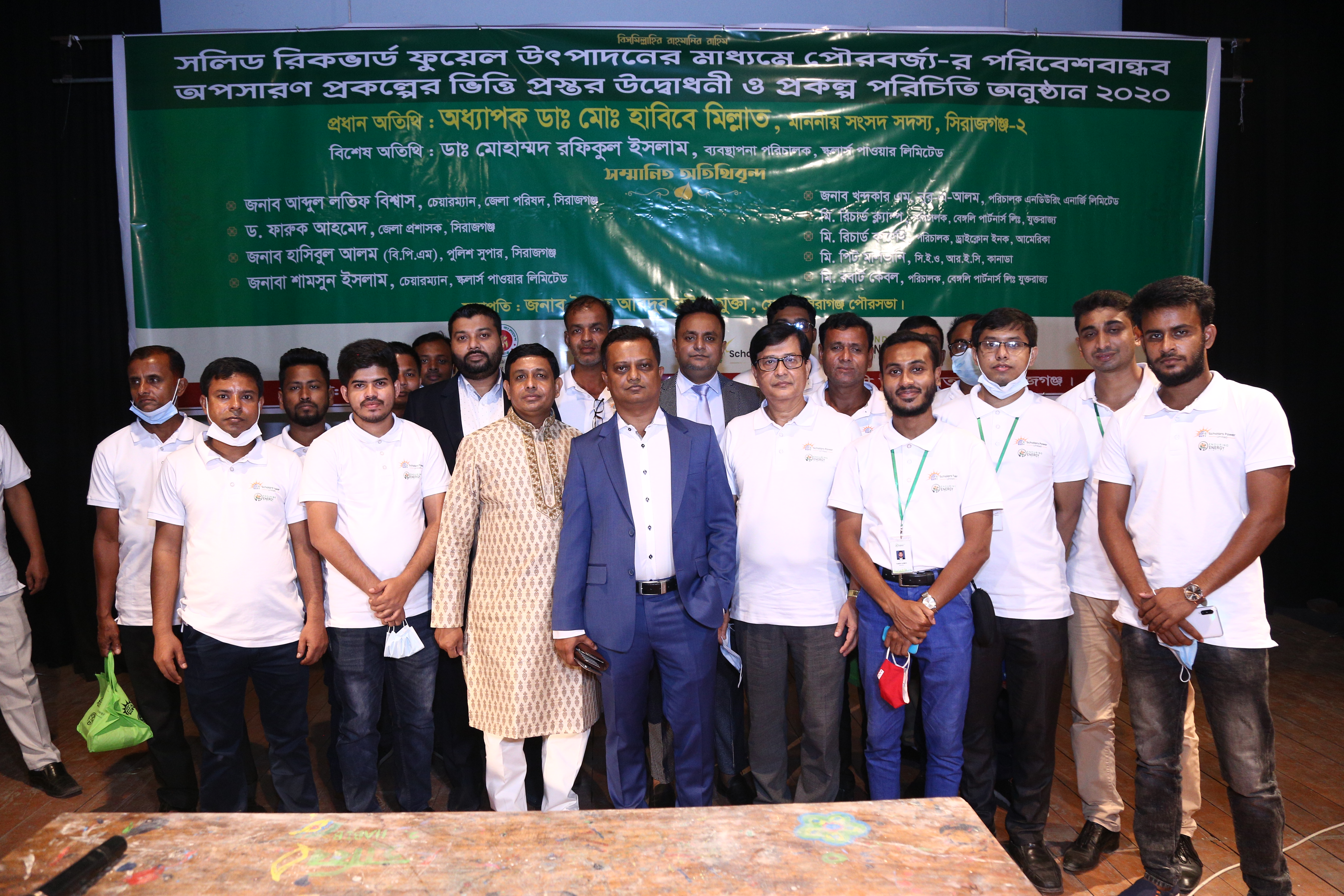Waste to Energy and Material Recovery Plant
We have secured a Government Agreement for a Waste to Energy and Material Recovery plant in Bangladesh. This project will save 100,000 tons of MSW going to landfill annually and subsequent methane emission. Also the finished product SRF will be used by cement kilns replacing coal which will again save 50 KT of CO2. Bangladesh produces more than 35,000 tons of MSW everyday without having a proper disposal system at present. This project will change the MSW scenario in Bangladesh.
To collect and process the daily generated municipal solid waste (MSW) through a proven technology. The Municipal Solid Waste (MSW) passes through a series of shredders, screens, air classifiers/density separators and magnets. Inert materials, recyclable plastics and metals are extracted from the shredded material, leaving a mix of mainly non-recyclable paper, card, wood, textiles and plastic which is the main ingredient of SRF. The production may involve some or all of the following steps:
Preliminary separation/sorting
Bio-Drying
Course, pre-shredding
Size screening
Magnetic separation
Refining separation
Fine, secondary shredding
Baling & wrapping
After being processed, the reusables and recyclables will come out from the system as by products and Solid Recovered Fuel (SRF) will come out as main product.
Solid Recovered Fuel (SRF) offers almost 30% financial savings over coal for the same amount of heat value. Compared to the emission of coal, SRF emits 30% less Carbon, 85% less Nitrogen, 90% less Sulfur, 50% less Chlorine and 40% more Hydrogen. This makes a tremendous difference on environment of using SRF instead of coal.
Apart from the huge financial savings (almost 30%) for the same amount of heat generated by SRF over coal, a major advantage of SRF is that the Net Calorific Value (NCV) fully configurable within the range of 7 to 28 MJ/Kg, which gives the customer the complete flexibility to get the exact heat output required by their system.
1. Reduce 97% land filling comparing to present.
2. Stop methane emission, air pollution, ground water pollution and soil distortion.
3. Recover reusables and recyclables.
4. The final finished product Solid Recovered Fuel (SRF) will be used in cement kilns, brick kilns, power plant, steel mills, etc. replacing coal.
5. For each ton of coal being replaced, minimum 1.25 tons of CO2 emission will be reduced.
We are looking for long term financing and/or equity partners for the project.
External source(s)
Image

Enduring Energy Limited
Project start date
16/08/2021
Project end date
31/12/2041

